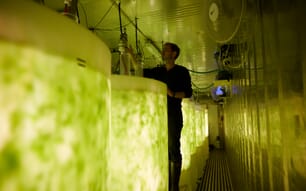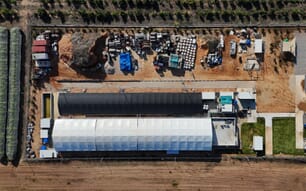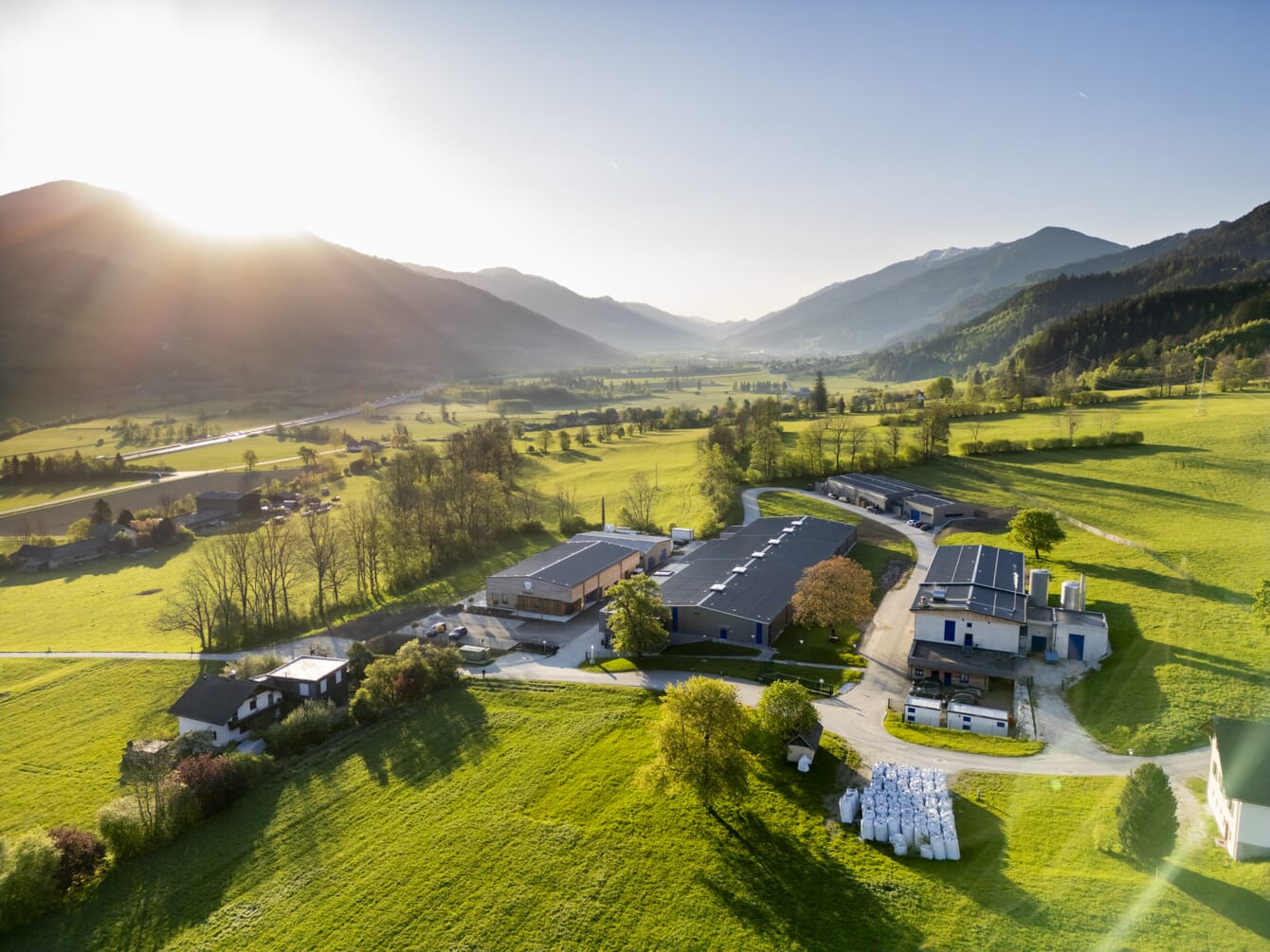
© While Panther
Can you tell me a bit about your background and what inspired you to set up an indoor shrimp farm, in Europe?
Our owner, Ingrid Flick, came up with the idea for the company after she saw a report and became aware of an indoor shrimp farm in Germany.
She loves to eat prawns, but didn't feel confident about the additives. After visiting the farm, she came to the conclusion that we in Styria have all the necessary resources for an indoor shrimp farm - clear spring water, our own energy and heat.
I’ve been in seafood for 15 years. Before I joined White Panther, I was CEO of a company which has trout farms and processing facilities in the northern part of Italy and Austria.
When I was asked to lead White Panther, I was enthusiastic about the idea of indoor aquaculture and I’m proud that I’m able to further develop the company.
Can you describe the farm’s key features – both in terms of the physical setup and in terms of the farming protocols you observe?
White Panther has its own mountain spring source, a biomass heating plant, which is operated with the waste wood from our continued forestry operation.
The company also has four hydroelectric power plants from which it obtains its electricity.
There is a hatchery in which the parent animals, imported from Hawaii, are kept until the post-larvae are ready. The grow-out facility comprises 56 tanks in three independent modules with three independent filtration circuits. We produce our own oxygen and ozone at the plant.
The processing facility is located in a separate building. Here the shrimp are processed, packaged and commissioned in line production, sorted by size, as whole shrimp or as easy peel or peeled shrimp.
What makes it unique?
The uniqueness of White Panther lies in its fully sustainable circular economy: the water, heat and energy all come from our own land. We use fallen wood to produce heat and water for our hydroelectric power plants to produce energy. So our resources are not wasted, they are reused.
It is also unique as the entire production process up to delivery to the end customer or supermarket is in the hands of the company and there are no middlemen.
What have been your key milestones to date?
In 2022, we carried out a massive renovation in the breeding hall. We added drum filters, denitrification and protein separators. We also built our own oxygen and ozone system.
We had originally started with a biofloc system, but this did not provide constant, monitorable breeding conditions. Our rearing and breeding facilities are fully monitored and visualised via a PLC programme. There are over 200 different alarms behind it.
This implementation was a milestone for White Panther to get into a continuous, controlled production rhythm.
What made you move to a clearwater RAS model?
After just 18 months, the instability of the biofloc system became apparent. The water values were subject to major fluctuations, and so was the breeding success. After switching to clearwater RAS, we can now control the water quality precisely and thus also the planned breeding quantities.
The shrimp have also improved massively in terms of quality, colour, flesh firmness and growth.
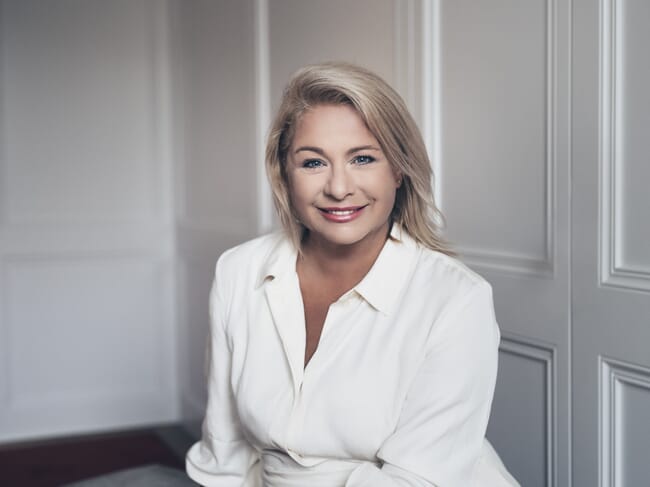
Keferböck has been in the seafood sector for 15 years © White Panther
Do you see the need for specific technology adaptation in indoor shrimp culture, such as the development of special RAS feeds?
There is certainly a great need for improvement and development in the areas of technology, measurement and control technology, as well as adequate feed for indoor aquaculture.
A great deal of know-how is constantly being developed in indoor farms, but details on the individual topics are rarely published.
What challenges do you still need to overcome?
We sell 80 percent of our mountain prawns fresh in Central Europe, while the remainder are sold frozen or as convenience products like shrimp pesto or shrimp powder for spices.
The quality, sustainability and final price are not comparable with goods imported to Europe. It is hard work to make Europeans aware of the benefits of fresh, sustainable mountain prawns. There is still a lot to do!
Who are the key players in your operation?
Our biologist, who helped develop the facility with all its details, has been in charge of rearing since the beginning. The hatchery is also managed by a biologist who, together with his team, monitors all production steps and, above all, strict compliance with biosecurity. The technical manager and his team are responsible for monitoring and developing the plant technology, including the adjacent energy and heat supply systems. The office team is responsible for purchasing, stock management, orders, CRM and QM using an ERP system.
How are you funding the farm and will you be looking for further investment?
We are owned by The Flick Family, whose vision is to become one of the most sustainable in Europe and also to research and establish indoor shrimp farming in Europe.
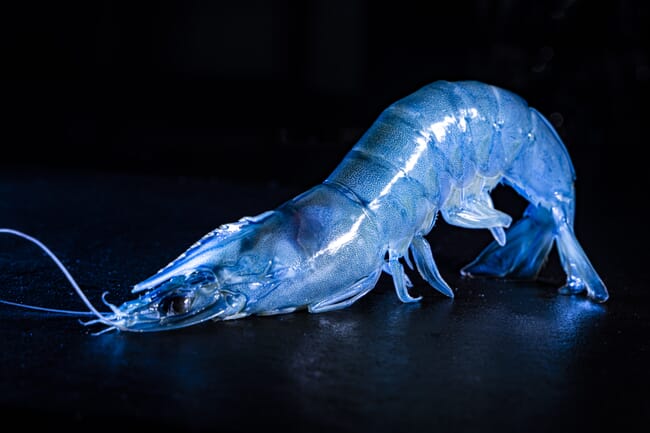
The company noticed a clear uptick in quality when they changed from biofloc to clearwater RAS © White Panther
How do you see the project developing in the years ahead?
White Panther will expand the farming of fresh mountain prawns from 35 tonnes last year to around 70 tonnes and then grow continuously in line with customer demand.
In the hatchery, our aim is to supply European indoor shrimp farms with healthy post-larvae, bred in artificial salt water and completely virus-free. Last year we produced 2 million PLs each month.
How long do you think it will take for the farm to become profitable?
A large proportion of the costs are for research and development work. Basically, it can be said that a quick return on investment in indoor shrimp farming cannot be expected; rather, a period of 6-8 years should be assumed. White Panther had the best prerequisites due to the available resources and the owners' willingness to continuously implement the research findings.
What are the main markets for your shrimp and have you been impacted by the downturn in prices that has hit conventionally farmed shrimp?
The markets for fresh and frozen mountain shrimp are the upmarket retail trade, the upmarket gastronomy and hotel industry, and, in direct marketing, the end consumer in private households.
Our fresh shrimp cost on average 77 percent more than frozen goods imported into Europe. We do not see imported shrimps as our competition, but rather our fresh shrimps to complement the product range for special occasions.
Although purchase prices have fallen worldwide, we in Europe are hardly feeling the effects of this, as supermarket chains have increased their margins. We see the fresh shrimp as a separate product that is not aligned with global market prices.
What advice would you give to anyone considering starting up – or investing in – an indoor shrimp farm?
When looking for companies that supply technical equipment, I would advise to pay attention to the reference projects they can show and to visit these. Furthermore, the planning calculation should be set up in such a way that a reinvestment is planned after three years.
An important point is the selection of the right personnel, who are essential for the management of the shrimp farm, because you can only run a successful breeding operation with committed and developable employees.

